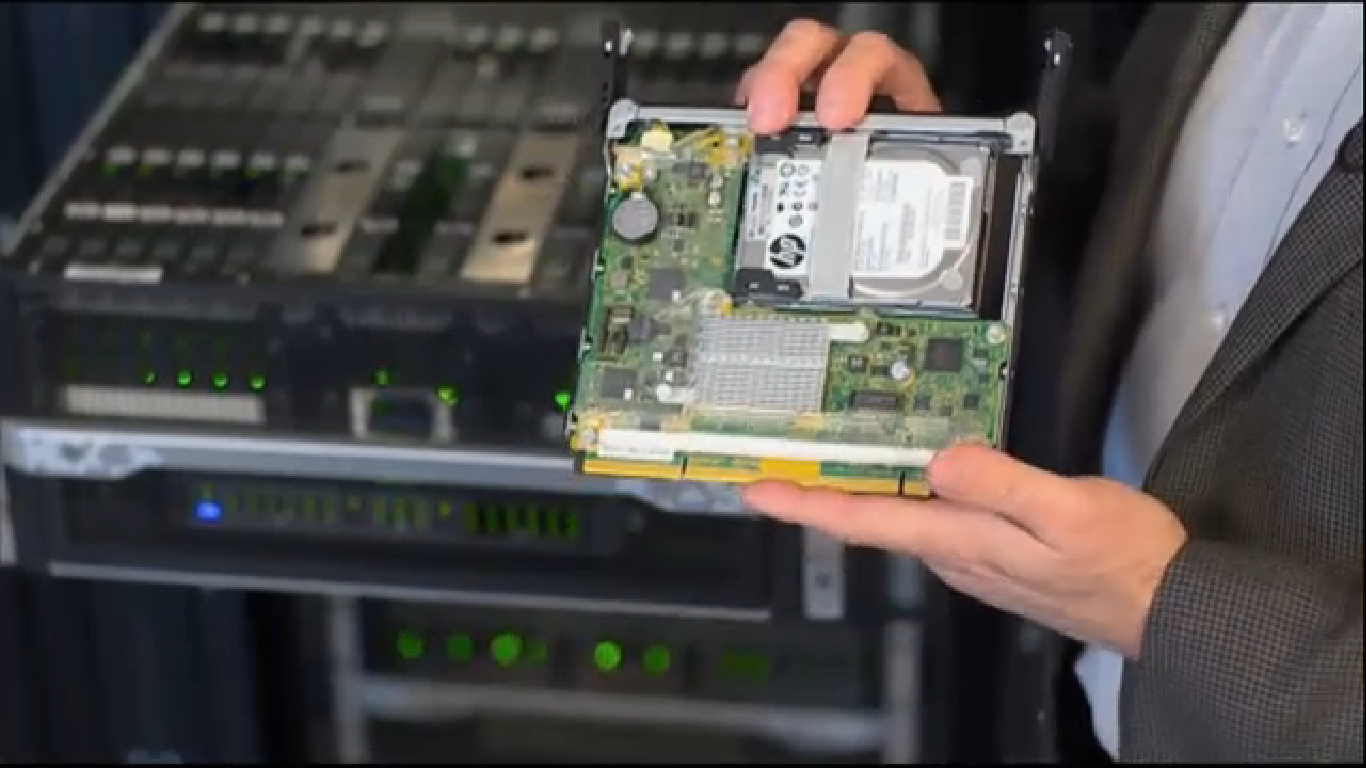HP Shoots for the Moon with Efficient New Server
Datacenters consume two percent of the world’s energy. Reportedly, datacenter energy use is expected to be as high as seven percent by the end of the decade.
 There have been several ways companies have tried to make datacenters more energy-efficient. Some have tinkered with the cooling systems, even using seawater to keep the heat down. Some organizations in cold areas, such as Finland and Sweden, have tried to let the outside air cool the servers and reduce energy costs.
There have been several ways companies have tried to make datacenters more energy-efficient. Some have tinkered with the cooling systems, even using seawater to keep the heat down. Some organizations in cold areas, such as Finland and Sweden, have tried to let the outside air cool the servers and reduce energy costs.
“Very powerful megatrends are forcing us to change the way technology is consumed, delivered and paid for,” said Meg Whitman, President and CEO of HP today during the introduction of the Moonshot server. “These types of big shifts happen every ten to fifteen years.”
Datacenters are due for a huge shift. Many organizations have been using the same client-server infrastructure since the ‘80s, which weren’t built to handle anywhere close to today’s level of computing.
“Right now we’re on a path that is not sustainable from a space, energy and cost perspective,” Whitman said.
Whitman explained that in the next three years, large cloud and web services “will conservatively have an installed base of eight to ten million servers in the next three years.” This will require so much space that the servers will end up occupying the equivalent of 200 football fields. If the datacenters were laid end-to-end, they would span the length of Manhattan. According to Whitman, the energy consumed would be the same amount of energy as two million American homes.
The company recently introduced their Moonshot 1500 enclosure and Proliant Moonshot servers, which offer processors from multiple HP partners, each targeting a specific workload.
According to HP, the Moonshot servers support up to 1,800 servers per rack while only taking up an eighth of the space traditional servers require, leaving datacenters with plenty of room for more servers.
Each chassis shares traditional components, including the fabric, HP Integrated Lights-Out management, power supply and cooling fans. By sharing these components, Moonshot makes things simpler while reducing both energy use and space.
"Faced with constraints for energy efficiency and analytic compute capacity to support world-leading geosciences research, we absolutely require technological innovations from leading companies like HP," said Chris Hill, principal research engineer, Massachusetts Institute of Technology (MIT), and co-chair, Research and Education Subcommittee, Massachusetts Green High Performance Computing. "Innovations such as HP Moonshot are providing us with confidence that infrastructure can continue to scale out to support fundamentally insatiable requirements—all with less energy, a smaller footprint, increased integration and lower cost.”
John Hinshaw, executive vice president, Technology and Operations, HP, puts the advantage of Moonshot another way. "Testing results show that with Moonshot servers we can expect to run hp.com, with the energy equivalency of a dozen 60-watt light bulbs, which is a game changer," he said. "We also plan to deploy Moonshot for additional applications to lead the next wave of transformation in the datacenter."
According to Calxeda, a four core version with 4GB DRAM will only consume five watts, which is less than the average tablet.
HP makes the claim that Moonshot achieved 89 percent less energy than their Proliant DL380 server. Moonshot accomplished this feat by using a shared infrastructure, which provides everything for the server community. Using a shared infrastructure means there aren’t extra components that are replicated on individual servers. Moonshot also reduces energy by targeting an application and designing a server specifically for that application.
“Moonshot addresses the space, energy, cost and complexity issues that make today’s computing platforms unsustainable,” said Dave Donatelli, Executive Vice President of HP’s Enterprise Group.
“With current server technology, the economics behind social, mobile, cloud and big data will begin to deteriorate rapidly as the requirements for servers continue to escalate,” Donatelli said. And this is where Moonshot comes in.
The server will allow customers to generate “greater revenue from a smaller footprint while driving down their operational costs with low energy processors,” Donatelli said.
Related Articles:
U.S. Department of Energy Turns to Asetek for Cooling
Put that Old Data in Cold Storage
SingleHop Opening Data Center in Amsterdam










